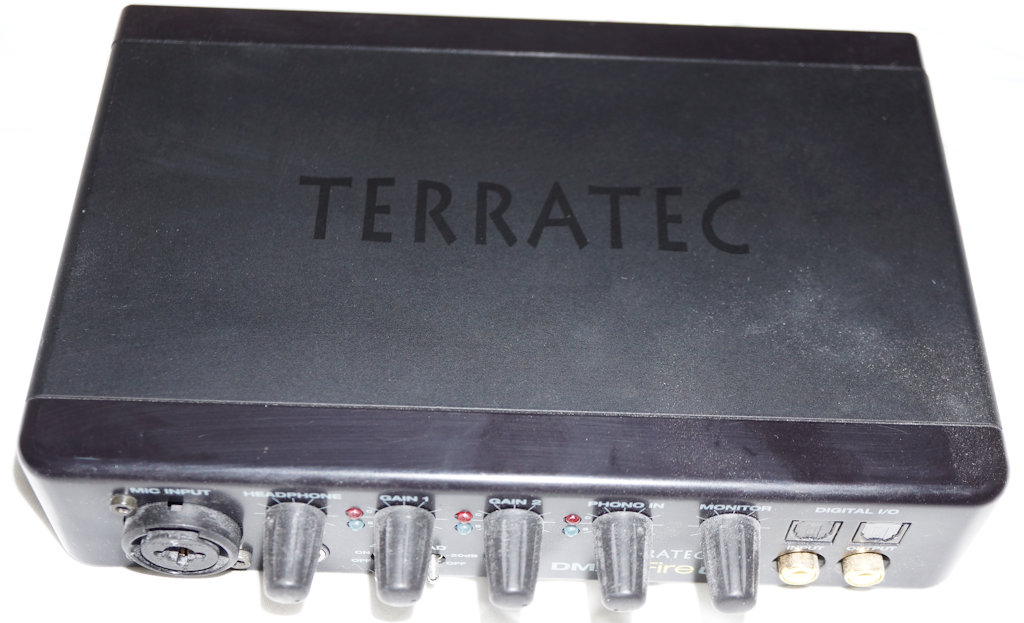
In experimenting with mixing the latest computer technology and external sound cards with new and vintage hi-fi I looked into aspects to answer the question "where next?"
Regardless of price and merit it might not be possible to put together the perfect system that satisfies every requirement now and is also not out of date fairly quickly. There are more pre-amplifiers that include USB inputs and for stereo music provide every need. The same choice is not available for those wanting to listen to stereo but also gain a full home theatre experience with six speakers or more. With the ability to find people upgrading and selling their old high-end equipment you are presented with the option of some exotically expensive equipment at a price you can now afford. Reviews of equipment might be found online with articles going back decades. These articles have a bias. They may compare the equipment with other new products but are not likely to compare it with vintage equipment. Ultimately the only one to know if one system is "better" than another is you and better is not just the quality of sound but price, size, features, personal bias and compromise. But there is no way to go around and review vintage equipment against anything available new. They also seems to be less new amazing products that out perform the price they sell at.
In researching hi-fi originally I was able to handle, control and link together a number of the system in the same shop. I was invited to bring in my equipment and directly compare it to suggestions at different price points. I also discovered that it was easy to miss match a system that would sound so different if something else was in the mix and impressive and loud were not good judges of what you might end up being happy with.
So I know some equipment is worth listening to and mixing in
with anything you can get new today. Any amplifier with a spare auxiliary or
tape input can connect to a computer that in turn can play any streaming
service, media files locally or CD, DVD and BluRay. Spare radio and television
receivers are not needed as a internal and external Satellite and terrestrial
receives can be installed. Thecomputer becomes the source for all digital media.
Cambridge Audio P80, P110 and Classic One but also P60, P50 with a more
restricted choice of speakers and the T55 FM tuner is sweet even on it's own
A&R Cambridge A60 and FM tuner T21
NAD 3020
Uher Miniline VG840, EG740, Z140 power amplifier
Nytech receiver
Lecson AC1, AP3
Quad 33, 303, 44, 405
Naim
Meridian 101B, 105, 103D and matching 104 FM tuner, MCA and tuner
Kef 101 speakers
JR149 speakers, Super woofer with LPA, JR150
Rogers LA3/5a near field monitors
Gale 401
The amplifiers of this vintage have moving magnet phono inputs
and some optionally moving coil. It was not long before CD over took the
importance placed upon vinly. These amplifiers, particularly pre-amplifiers, do
provide an alternative to a modern phono pre-amplifier and can be included as an
option through the tape or power amp output into the aux input.
In the future MM and MC inputs may not be needed and nor will CD, tuner and
perhaps no analogue either in spite of the revival of vinyl and compact
cassette. Broadcast television and radio along side free streaming
services like BBC iPlayer and BBC Sounds, All4, ITV Player, YouTube. Others like
Tidal, Spotify offer free but advertisement based or subscription service.
Britbox, Amazon, NetFlix, etc are subscription services.
The problem with the modern choices of hard ware is that they will become redundant quickly. Some amplifiers had computer control via RS232. Modern PCs do not have RS232 fitted. AV systems used component video and then S-video, HMDI 1.3 and now 2.x. USB found on some DACs is compatible with version 1.1. Computers have moved to version 3. Many only use USB for control and software update but not for audio output from a computer, laptop or tablet. Surround sound AV Receivers and Sound bars have eARC HDMI inputs but computers have moved to display port and Thunderbolt.
DACs and digital inputs to an amplifier may have coaxial and optical (Toslink) digital inputs and outputs. Toslink unlike HDMI does not have the bandwidth to carry uncompressed audio using S/PDIF (Sony/Philips Digital Interface). The CD standard is 16-bit/44.1kHz. High resolution is 96kHz or 192kHz at 24bit.
Hi-res files are larger than PCM wave files. Many streaming
services use MP3 (128 or 192 kbps, sometimes at 320 kbps, AAC (better sounding
than MP3 for the same bit rate), FLAC (Free Lossless Audio Codec) and ALAC
(Apple Lossless Audio Codec) are compressed but lossless taking less space than
wave and includes meta data and support hi-res. With programmes like MP3TAG meta
data can be added to wave files and programmes like VLC can read it. Streaming
services started with MP2 and MP3 or AAC and then offered higher bit rates and
eventually some hi-res music. In video and films the codecs are more varied and
both video and the sound offered at different compression rates as well as
resolutions.
Some use Ethernet but at 10, 100 or 1000 megabit. Firewire came and was to be
the fast way to transfer data but has largely disappeared leaving USB 2 and 3
standards. Tomorrow - something different and incompatible. FM and AM will be
phased out and although DAB may remain it also may not be updated in the UK to
that to be adopted in the rest of the world and there is yet to be a separate
for hi-fi that takes DVB-T and DVB-S radio stations.
A few devices handle HDMI switching and HDMI 5.1 and 7.1 audio to analogue RCA 6 and 8 channel to an AV receiver or active speakers such as the Cyp AU-11SA-4K22 HDMI Audio De-embedder (up to 7.1) with built-in Repeater (4K, HDCP2.2, HDMI2.0) which is controlled by Windows 10 software. There is no similar multi-channel device to DSP speakers with coaxial, Toslink, USB or Ethernet inputs
Most early digital systems, even high end, have been replaced by cheaper and more flexible newer systems. Analogue inputs phased out for digital inputs, have DACs for analogue output for passive speakers or line level to power amplifiers and analogue active speakers. Taking a choice of digital inputs but output to DSP and wireless speakers are confusing, soon out of date and not so easy to mix from different or even the same manufacture. Control is often by an app on a mobile phone. Update to the app may need a new phone and updates to the phone, or the latest model not compatible with discontinued speakers.
Televisions sets have digital audio outputs via fibre optics or eARC HDMI and take HDMI 7.1 surround. Computers have USB stereo DACs, a few 5.1 and 7.1 USB external sound cards or output via HDMI but using display ports.
Basically what this means is that a computer can get software updates but hi-fi and video components may only get an update whilst in current production. A computer can add a new card but hi-fi and video devices usually can not be updated.
The Terratec DMX 6Fire USB external 5.1 surround system (discontinued) for the PC provides digital RCA, analogue audio (even moving magnet phono) inputs and 5.1 output directly into the Meridian G55 power amplifier.
All the controls are provided by the computer which has a Hauppauge 4000 with FM radio, analogue TV, digital Freeview and Freesat HD including digital national radio, a LG Blue-ray writer and interface to selection from the home server based digital juke box of 12,000 audio files and 1100 feature films. Until there is a USB 5.1 system that maintains the 192kbits digital signal to Meridian DSP speakers I retain the analogue speakers and in particular the active M1 purchased in 1980.
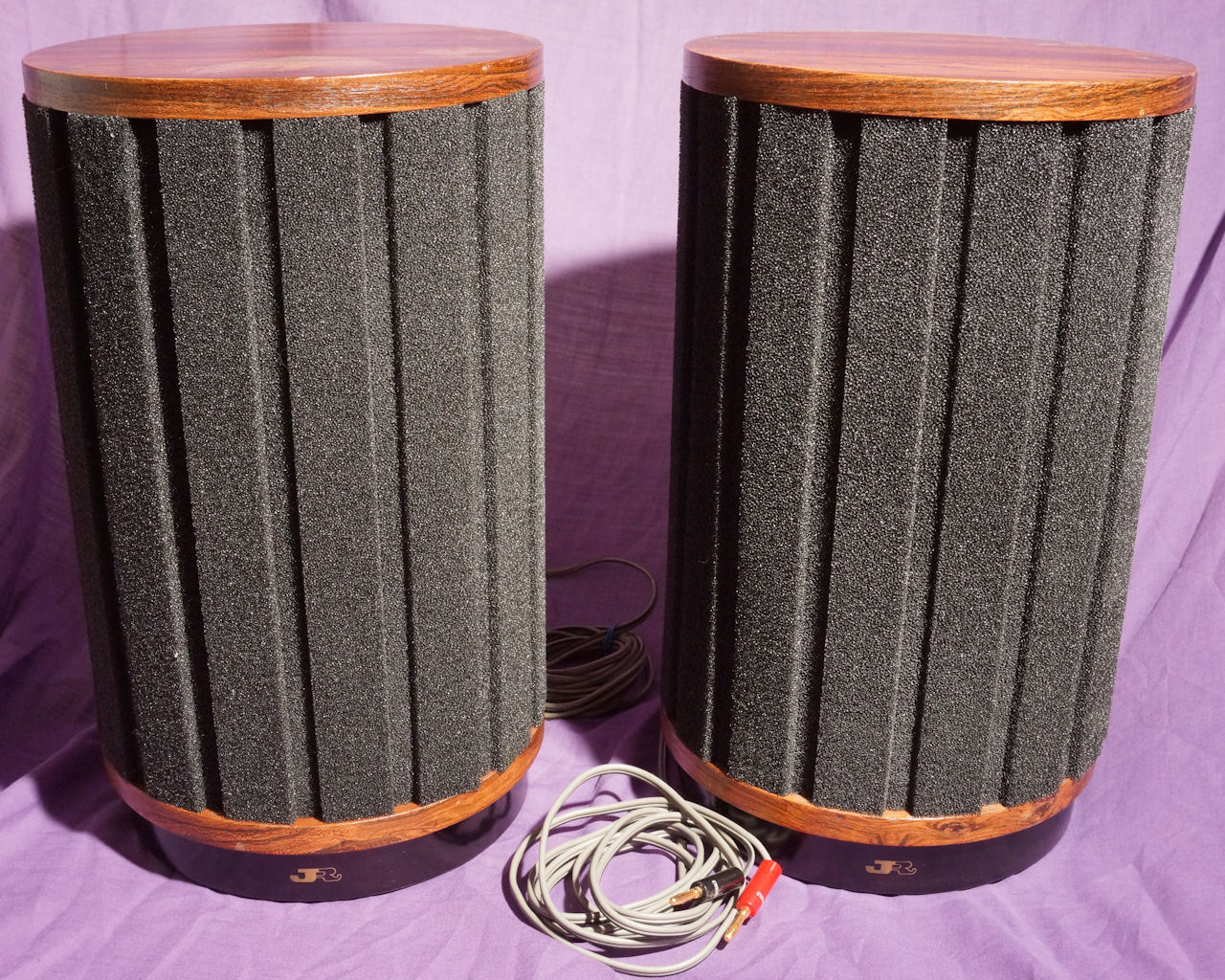
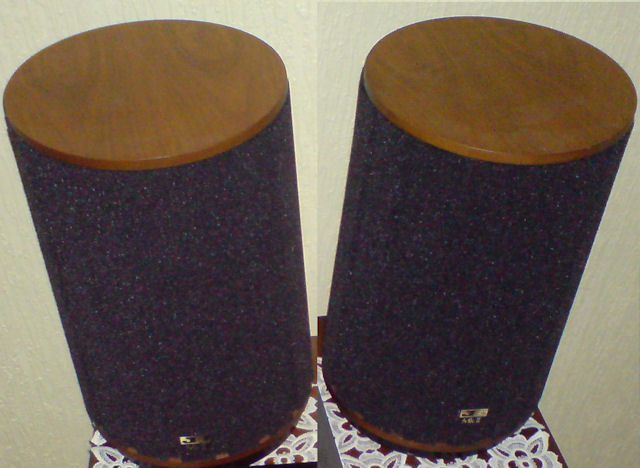
The marrying of vintage 1978 JR149 speakers to 2006 power amplifier (purchased July 2009) is interesting but not without problems. The JR149 are a small speaker. For a speaker of this size the bass is full and controlled does not go as low as 3 way floor standing tower. For a full range in stereo the JR Super Woofer is a useful addition.
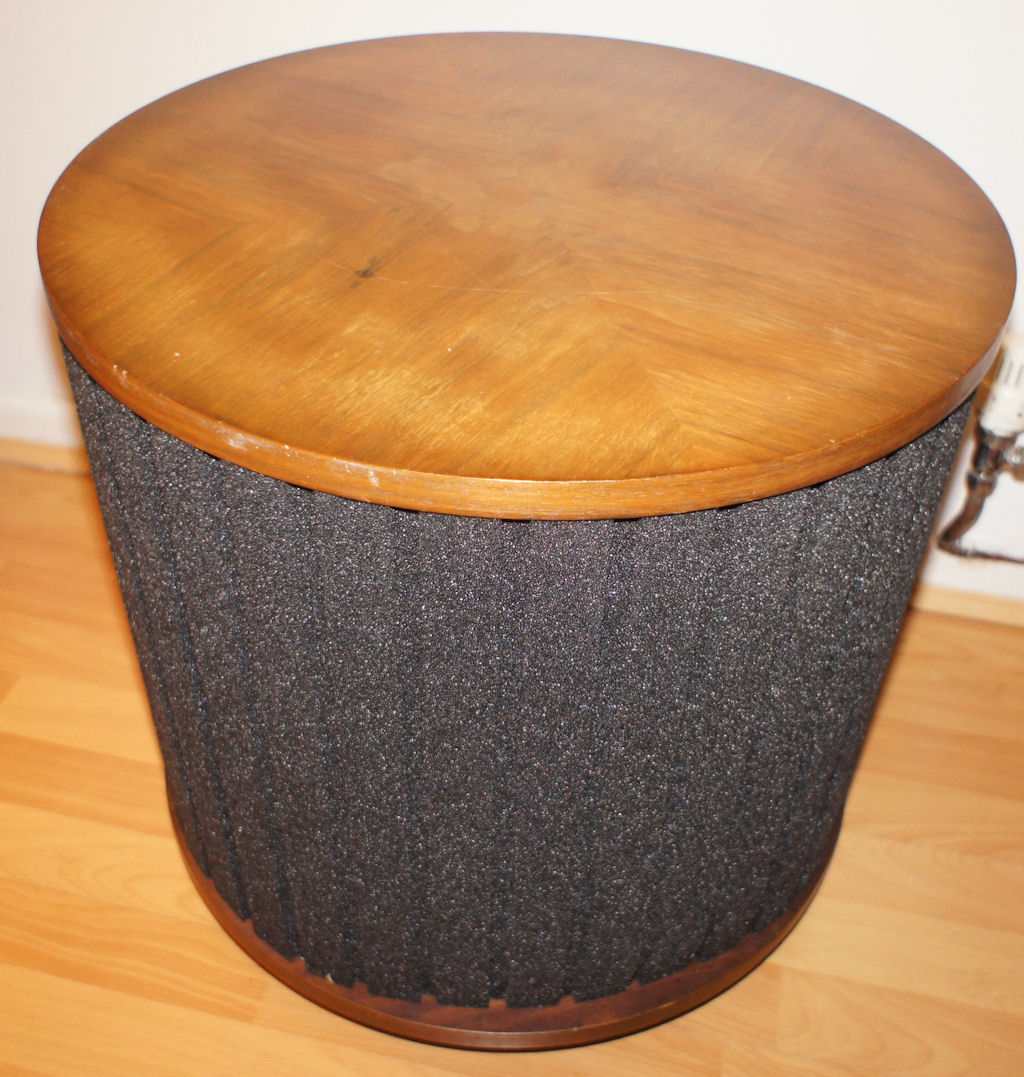
This comes with a large circular bass unit and a separate low pass amplifier.
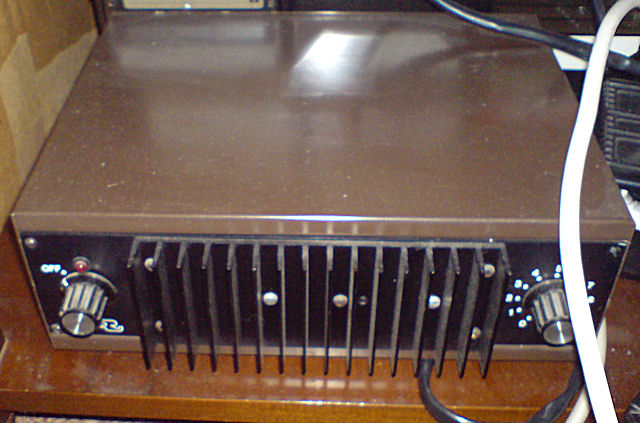
For surround sound you may have to buy a third pair of speakers (added November 2009), only one of which is need as a centre speaker.
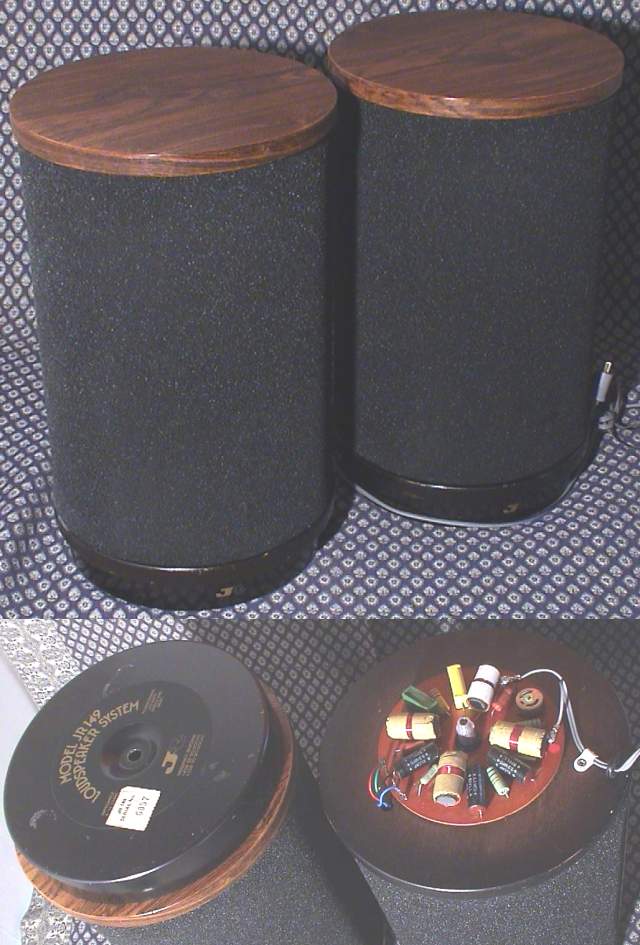
The JR super woofer adds base to the stereo front channel pair but you still need an active sub woofer for the 5.1 system. A B&W PV1 sub-woofer was added in July 2010.
The beauty of the JR149 is that only a fully active full range system (analogue or digital) is likely to improve the sound quality.
The LPA and super woofer worked perfectly in a stereo system using the Meridian MCA amplifier. Connection to two of the channels of the Meridian G55 blew fuses in the JR149, damaged the LPA and black smoke came out of from the power amplifier. Meridian offered to find and resolve the problem however I had decided by this stage not to use it.
The Hauppauge 4000 was replaced with dual Freeview and dual Freesat Blackgold BGT3202 in 2013.
Expanding the M1 into surround sound needs M2/M3/M20/M30/M60 as rear channel speakers, a centre speaker (e.g. M60C)and an active sub woofer. An all DSP 33/3100 or 5000 series system becomes the more attractive and better matching alternative but needs a controlling surround sound pre-amplifier and a means of getting surrounds sound into it; all at a high price.

M60 and D600 are full range active speakers, dating from the late 1980s, so 8-10 years younger then the M1s. The D600 adds coaxial and Toslink inputs. D600 speakers can be configured as front left or right and rear left or right speakers. A link cable between the speakers provides balance between left and right, front and back. I have not been able to get the special cable to connect front to rear speakers and Meridian no longer have the information to make one. So I have analogue to each speaker and they are controlled as two pairs. Only the front rear balance has to set by blocking the infra red signal to one pair. The inter connecting cable carries control and digital audio to the secondary speakers if you have the correct cabling and set up.
The price of either M60 or D600 speakers is very similar to those of the JR149. Being 3 way speakers with a port are full range giving a lower bass. This might be over kill when used as rear or side speakers but they can double up for use as stereo speakers in place of the M1. The D600 replaced the JR149 in August 2014.
In this arrangement I have found the M1 do not go to the same volume level as the D600. Perhaps age is the issue. At full volume the D600 go into distortion but are fine at any level you can tolerate being in the same room. There is no matching centre channel so a Meridian M60C is used.
The acclaimed B&W PV1 is retained as sub woofer.
Unlike the D600 the M60 and M60C have no control of the volume level. Setting the D600 to between 40 and 45 out of 64 seems about right. Without the remote control the D600 can not be switched on or adjusted. The power switch puts them in standby. Replacing the EPROMs converts them to M60 style and full output needing the levels to be set by the computer or pre-amplifier.
The D600 take input from flat screen televisions/computer (Toslink) or DVD/BluRay players (coaxial). For stereo this eliminates the need for an pre-amplifier.
Over the 8 years of this arrangement one D600 has needed repairs (display showing 88:88, digital input damaged and the LCD is still not fixed) and one of the amplifiers in a M1 pops and crackles and repairs to fix this are short lived. A second pair of D600 were purchased in August 2018. All LCD panels have some minor display fault and the gold printed model numbers are peeling off.
Better control would be achieved with a Meridian G68 or G65 surround sound amplifier. G68 accepts 6 channels of analogue inputs, 4 Toslink and 2 sets of 6 coaxial digital inputs and the later release USB audio from a computer at 16/44. Outputs are analogue to a power amplifier or actives speakers or digitial to DSP speakers. The USB from a computer was reduced to control purposes only in G65 but includes a MMHR socket. Using a UHD722 to take the HDMI input and de-embeds to a MMHR output. This route is very expensive and includes a lot of extra hard ware that I will not need. UHD77 includes HDMI sockets for seven sources - I only need one from the computer. G65 supports fibre optic, coaxial and analogue inputs all of which are redundant but a single full HDMI debedder and USB 7.1 192/44 would reduce the box count and cables.
In the Microsoft release 1809 the removed support for the chip set in the Terratec DMX6fire USB. Reinstalling clean either results in the application crashing or an unacceptable noise level on inputs and glitches in sound during a movie.
In February 2022 a Cyp AU-11SA-4K22 HDMI Audio De-embedder (up to 7.1) with built-in Repeater (4K, HDCP2.2, HDMI2.0) replaces the Terratec DMX6fire USB.
This plugs into the third display port of the graphics card (no monitor needed but has a HDMI pass through). The first DP on the graphics is to a 4K 32" monitor and the second to HDMI 4K 65" touch screen display panel.
This extracts the audio to 8 channel analogue output, has a 5.1 Toslink fibre optic output and a mini USB for service.
Windows recognises the Cyp AU-11SA-4K22 and with the switch set to LPCM 7.1CH and 6 or 8 speakers connected the standard software in Windows 10 can set up for 5.1 or 7.1 surround sound. Windows 10 also features room correction by setting up a microphone in the main listening position if calibrates each speaker.
An almost identical unit is the Essence Evolve II-4K HDMI v2.0 / Multi-Channel DAC won Stereophile Product of the year 2019.
The DAC in the Cyp AU-11SA-4K22 sound is clearer than I now get with the Terratec and no glitching. What is absent from the DMX6Fire USB are the XLR microphone, the analogue line level, midi, fibre optic and coaxial inputs and headphone, midi, fibre optical and coaxial outputs.
A second on experiment with another computer uses two pairs of Bose Roommates - powered speakers, using the speaker in the computer monitor for the centre channel and sub (in adequately). The Bose Roommates are less than half the size of the JR149 and at modest volume levels do not disappoint. Control and balance from the Realtek software. For a bedroom or small study this is an acceptable arrangement. The Bose Videomates were originally sold for 325 GBP and were among the better powered speakers for use with a computer.
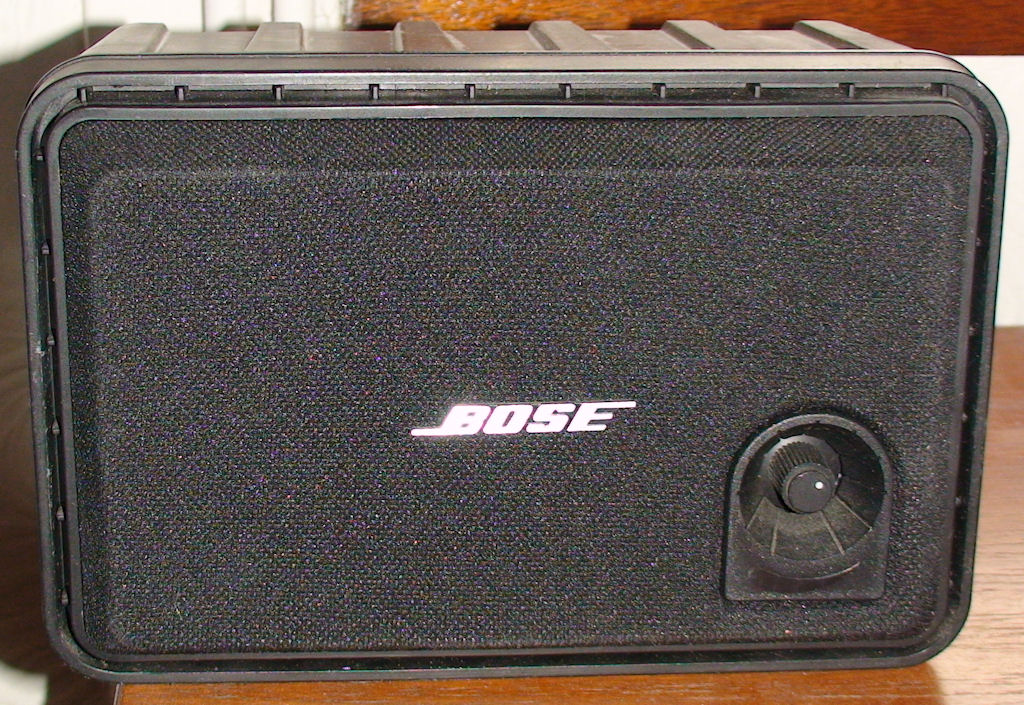
Last updated 19th February 2022